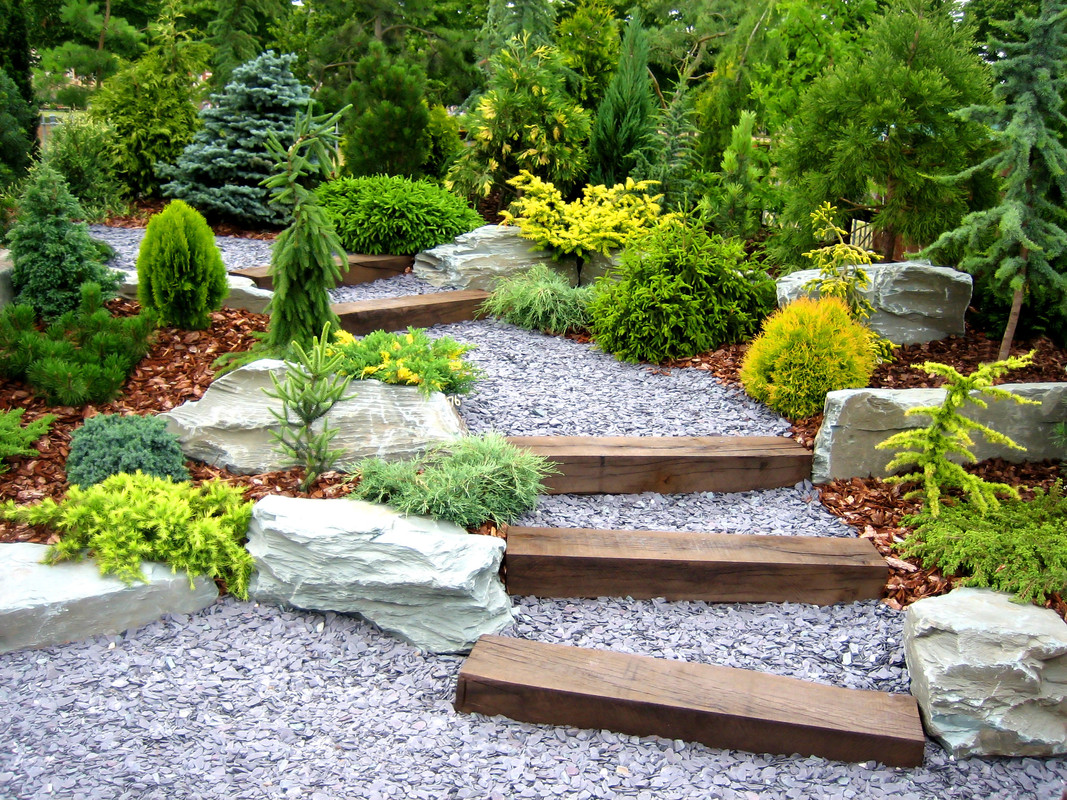What Is Landscaping?
by siteadmin

What is Landscaping? In a nutshell, landscaping is a process of modifying the visible features of a piece of land. It involves the use of plants and hardscape elements. It may also include the selection of appropriate materials. After all, you don't want to waste all that hard work by putting it to waste! Here are some tips to help you achieve your dream yard:
Landscape design
In addition to architecture, landscape design combines nature and culture. This form of design bridges the gap between garden design and landscape architecture. The field of landscape design is an independent profession with many different styles and methods. Let's take a look at some common landscape design elements and tips. To start, think about the style and layout of your garden. It's important to know the style of your garden, or you may end up with a space that doesn't have the proper flow.
A good landscape design should have a balance between balance and contrast. Balance is important because it creates a visual illusion of unity. Visual balance is achieved through the juxtaposition of elements. To achieve this balance, choose complementary colors. Warm colors advance toward the viewer while cool colors move away from the viewer. They also create perspective. If you're unsure of which color combination you'd like to use, consider mixing warm and cool colors for your landscape design.
If you're looking for a design that will fit your needs, you can ask a landscape designer to provide you with a basic sketch of the area you'd like to landscape. After the outline is drawn, add details and drawings of the desired landscape. Remember to include the boundaries of the area. This will help the designer determine how much space you have to work with. Once you have an idea of what kind of design you'd like, start collecting pictures and listing your requirements.
Balance and unity are important in landscape design. Ideally, elements should be related to each other. If possible, you'd want to repeat a design element, but not to make it monotonous. To achieve unity in a landscape, try to choose a theme with similar colors or forms. One example of this is red. Plants with similar red foliage and flowers will blend together perfectly. When choosing colors, consider the theme and the balance between them.
Hardscape design
You should be sure to choose a hardscape design that suits the overall style of your home. While straight lines might be tempting, you may want to create a soft curve or curved edge. Then, link the hardscape features to the paths. By doing so, you will see whether the design you've chosen fits the overall style or looks forced. Pathways should flow naturally and be easy to follow. Avoid using stairs or stepping stones unless absolutely necessary.
When selecting a hardscape design, consider your home's design and function. A good hardscape design blends aesthetics and functional needs. Think about the size of your yard, the slope of the yard, and whether you have children or pets. You can use various materials and angles to achieve a unique look. Once you have determined the type of hardscape design that fits your needs, you can start talking to landscapers about the design.
You can also use hardscape to enhance other objects on your property. A stone retaining wall is a practical choice for planting areas, while flagstone is a low-cost option for natural stone outdoor flooring. A tile patio or stone walkway can dress up a concrete slab. You can also add decorative elements such as stone landscape steps. Metal or wooden fences add shade and visual interest to your yard. Pergolas are arbor-like structures that are attached to your house.
When selecting hardscape materials for your landscape, you should first consider your climate. A tropical climate requires a different hardscape design than an arid climate. Consider how much water the climate in your area allows, and make sure the landscape you choose will help retain that water. A well-designed landscape will be the perfect balance between soft and hardscape materials. So, be sure to consult with landscape professionals if you are unsure of which type of hardscapes will best fit your home.
Plant selection
Individual choices in plant species have important effects on urban hydrology. In a study, individual plant choices were analyzed across 13 common landscaping species. Researchers looked at leaf hydrophobicity, angle, and area, as well as water droplet retention and storage. Results indicated that different plant species have significantly different effects on rainfall interception. Despite their differences, these findings support the need for more research and consideration of plant characteristics. This study provides new information for landscape designers to consider when planning a landscaping project.
First, determine the desired height of plants. There are various plant heights to choose from. You may want a small hedge, a dense bank of shrubs, or a ground cover. Whatever your landscaping goals may be, there's a plant suitable for the area. Some types can grow to the height you're after and require little to no maintenance. Others may require regular pruning, which can prove to be tedious. Once you know what you want, plant selection becomes easier.
After selecting the right plant for your landscape, consider how it will grow. After it is established, accent plants will show their best qualities, while border plantings will take on the shape you want them to have. Keeping up with the maintenance of your plants will ensure their long-term appeal. Finally, consider the types of plants you intend to grow and how you will manage them. These considerations will guide your final plant choices. If you are unsure, consider using a checklist to guide your decision.
Maintenance
In this article, we'll discuss how you can hire a landscape maintenance company. With an average employee tenure of 15 years, this full-service landscape management company has the considerable operational capacity and in-house resources. Its employees are fully committed to the upkeep of your property, so you don't have to worry about hiring a substandard company.
The landscape maintenance team oversees every aspect of the maintenance of your lawn, garden, and other landscaping features. They offer a reporting system to keep track of your yard and landscape's health and provide you with ideas to enhance your landscape. And if you are planning on hiring a landscaping company in the future, they have the experience to get the job done right. Maintenance of landscaping is essential to keeping your yard looking its best.
Performing proper landscape maintenance requires regular watering, weed control, and mowing. Depending on the district, you may also have to replace or repair hazardous trees or other landscaped areas. It also includes keeping sod areas green and weed-free. In addition to watering, you'll have to prune, cultivate, and remove overgrown vegetation. And don't forget about replacing plants. All of these tasks are a necessary part of proper landscaping.
The cost of landscape maintenance includes appurtenances such as monuments, fencing, retaining walls, and ornamental lighting. Other landscaping improvements may include the maintenance of irrigation and drainage systems, as well as electrical equipment. The cost of maintaining these features is typically lower than those of other types of property maintenance. For example, maintenance of a small garden may cost as much as $80 per square foot. A yearly fee of $280 per square foot for the same amount of work may be enough for a few years.
Cost
Whether you're planning to landscape your backyard yourself or hire a professional to do the work, the cost of landscaping will depend on many factors. The type of materials you choose will depend on your region. Choosing plants that grow in your area will save you money in the long run. The cost of labor will vary as well, but the overall cost should be within your budget. Listed below are some of the main factors to consider when calculating your landscaping budget.
One of the most popular features homeowners are seeking to install a pond. While installing a pond is more expensive than installing a pool, a retaining wall can still cost several thousand dollars. Water fountains are another popular landscaping choice. Basic water fountains typically cost about $2,000, but more expensive versions can reach as much as $6,000.
Aside from planting new plants and trees, homeowners can also install a paver walkway leading to their front door. This simple landscaping project will cost an average homeowner around $2,680, compared to $3,438 if it is done by a professional. However, homeowners can save almost a thousand dollars by installing these features themselves, though they will need to invest their time in the process. For this project, it's best to find a contractor with several years of experience.
Landscaping is a big investment, but you can lower the cost significantly by working with a professional. However, you should be aware that landscaping can be costly, so it's always best to work with a professional to avoid making mistakes that can result in a costly redo. A landscaping contractor will be able to work within your budget and guide you through the process. They know which materials are best for different purposes, and they'll have all the necessary tools to make your landscaping last for years to come.
Categories: Landscaping
Tags: landscaping services, landscaping guide, landscape designs, landscaping approaches, landscaping techniques
What is Landscaping? In a nutshell, landscaping is a process of modifying the visible features of a piece of land. It involves the use of plants and hardscape elements. It may also include the selection of appropriate materials. After all, you don't want to waste all that hard work by putting it to waste! Here…
Recent Posts
- Dr. Anne Berkeley PLLC – Leading the Way in Naturopathic and Functional Medicine in Washington, DC
- Next Day Potty Revolutionizes Event Planning with Premium Portable Restroom Trailer Rentals
- Next Day Potty Revolutionizes Event Planning with Premium Portable Restroom Trailer Rentals
- Transform Your Events with Winks Photo Booth: The Premier Glam Booth Rental in DC
- Essential Tips on How to Properly Care for Your Dental Implants for Longevity
